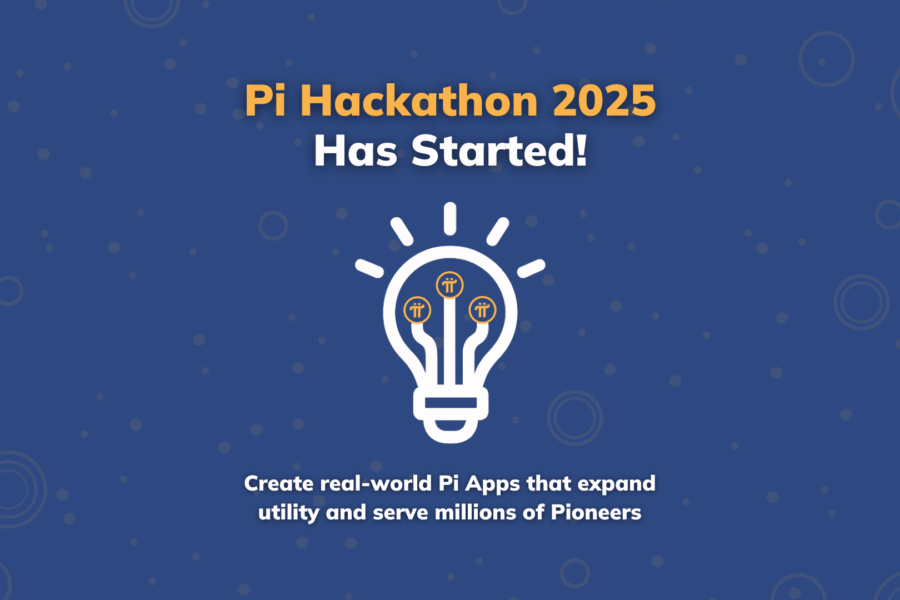The Dilemma of Popularization in the Crypto Industry
In the past decade, the crypto industry has made significant technological advancements. From decentralized consensus mechanisms to smart contract platforms, from stablecoins to on-chain financial tools, innovations have emerged continuously. However, from a macro perspective, the industry still faces a fundamental issue: the majority of people have yet to truly enter the crypto world.
This gap between technological maturity and user adoption reflects the core challenge of the crypto industry. From a technical standpoint, blockchain infrastructure is quite robust, allowing users to complete almost all traditional financial services on-chain. However, from a user experience perspective, the use of wallets, payment of Gas fees, complex interaction logic, and even the understanding of "what cryptocurrency is" all pose barriers for ordinary users. A deeper issue lies in the psychological differences of users—traditional finance is a "black box operation" for the average user, while the crypto world requires users to take on more responsibility: safeguarding private keys, understanding smart contract risks, and assessing project reliability.
This shift in responsibility, while aligned with the principles of decentralization, creates a significant gap with the habits and expectations of the general public. The uncertainty of the regulatory environment further exacerbates this dilemma, as the regulatory attitudes towards cryptocurrencies are still evolving across the globe. This uncertainty not only affects product design for companies but also directly impacts the willingness of ordinary users to participate.
The Rise of Popularization Exploration
In the face of these structural challenges, the crypto industry has gradually begun to reflect on traditional technology-driven strategies. In the past, most projects focused on technological innovation as their core selling point, emphasizing faster transaction speeds, lower fees, and stronger security. However, this "technology-first" approach, while driving industry development, has not effectively addressed the issue of mass adoption. Against this backdrop, some projects have started to explore different paths, characterized by no longer making technology itself the sole selling point, but rather emphasizing "everyone can participate" by lowering barriers, strengthening incentives, and building trust to attract ordinary users.
These explorations have gradually formed several representative popularization strategies: the first is the community-driven strategy, which accumulates a large user base through extremely low participation thresholds and then creates value through network effects; the second is the identity verification strategy, which attempts to establish a global identity system for equitable distribution; the third is the scenario-based application strategy, which packages complex crypto concepts into concrete applications that are close to everyday life. Although these different exploratory paths vary greatly in specific implementation, they all point to a common goal: to enable more ordinary people to truly participate in the crypto world. After several years of development, the effectiveness and limitations of these strategies have gradually emerged, providing the industry with valuable practical experience and profound lessons.
Community-Driven Model: The Game of Scale and Value
The first path emphasizes accumulating a large user base through extremely low participation thresholds, relying on network effects and community consensus to create value. The core idea of this model is: as long as enough people participate, a valuable network can be formed. Pi Network (also known as Pi Coin) is a typical representative of this model. Since its launch in 2019, it has promoted the slogan "everyone can mine," allowing participation with just a smartphone click. Compared to traditional mining, which requires expensive equipment, Pi's threshold is almost zero. After several years of accumulation, its global registered user base has reached tens of millions, and the invitation mechanism among users has generated a powerful viral effect. However, years of development have also exposed the core challenge of this model: how to convert a large user base into real value? Although Pi has gradually advanced towards mainnet launch, ecological development has been slow, and actual application scenarios remain limited. User enthusiasm has begun to diverge, and skepticism is increasing.
In response to these challenges, Pi Network is seeking breakthroughs in multiple areas. In terms of technical upgrades, the team has upgraded the protocol from version 19 to version 23, drawing on the mature design of the Stellar protocol to enhance network scalability, while also adding Linux node support and launching Testnet 2 to prepare for the mainnet migration. In ecological development, the project actively cultivates the DApp ecosystem through tools like the Pi Application Studio and Brainstorm App, and the ongoing Pi Hackathon 2025 will focus on incentivizing practical application development in business, education, and governance, while continuously integrating more core applications into the PiNet platform. In terms of real-world application breakthroughs, Pi Network has made significant progress, establishing partnerships with well-known platforms such as Onramper, Onramp Money, TransFi, and Banxa, creating fiat-to-Pi conversion channels in over 60 countries and regions, allowing users to participate more conveniently in real-world financial activities. Through merchant cooperation programs, users can now use Pi coins to directly purchase goods and services in some emerging markets, marking an important shift from concept validation to practical application.
In building user trust, Pi Network is embedding KYC verification directly into the blockchain through protocol upgrades and introducing trusted third-party verification agencies to construct a more decentralized identity verification system. To address the long-standing issue of KYC processing speed that has troubled users, the team has committed to launching automated verification tests and mobile-friendly solutions. In terms of transparency, the project's founder will deliver a keynote speech at the TOKEN 2049 conference in Singapore, sharing insights on how blockchain generates real-world utility, while maintaining open communication with the community through regular blog updates. This case illustrates that while the community-driven model can rapidly accumulate user scale, relying solely on user numbers is insufficient to build a sustainable ecosystem. The transformation from community consensus to actual value requires simultaneous efforts across multiple dimensions, including technical optimization, ecological development, real-world applications, and trust mechanisms. Pi Network's current systematic efforts indicate that even in the face of skepticism, this model is actively seeking feasible paths to transition from pure user growth to practical value.

Source: Pi Official Website
Identity Verification Model: The Collision of Idealism and Reality
The second path attempts to achieve popularization by establishing a global identity verification system, emphasizing equitable distribution and financial inclusion. This model posits that as long as a unique identity for everyone can be ensured, true inclusive finance can be realized. Worldcoin is a representative project of this model. Since its announcement in 2021, this project, led by OpenAI co-founder Sam Altman, has established a "global unique identity verification" through iris scanning and distributed tokens to everyone. Its starting point is to promote financial inclusion: everyone can receive tokens for free based on their identity. After several years of promotion, Worldcoin has set up scanning points in multiple countries, accumulating a considerable user base, and the tokens began trading after the project's official launch in 2023.
However, the reality is far more complex than the ideal. Governments in several countries have raised concerns about its privacy protection and data security, and some regions have even suspended scanning activities. To address these challenges, Worldcoin has taken a series of measures: open-sourcing the Orb software to increase transparency, launching a "personal data hosting" feature that allows users to store iris data on their own devices rather than centralized servers, allowing users to "unverify" their identity to permanently delete iris codes, and implementing face-to-face age verification to ensure that only users over 18 can use the service.
Despite these efforts, Worldcoin still faces strict scrutiny from regulators and bans from some countries, such as the Spanish Data Protection Agency ordering the deletion of all collected iris data. These cases reflect the conflict between technological idealism and the reality of regulatory environments. Even well-resourced and well-connected projects can feel powerless when facing cross-border regulatory challenges. While the identity verification model is theoretically appealing, it faces significant compliance and privacy challenges in practical advancement.

World Coin Iris Scanner
Scenario-Based Application Model: The Cycle of Prosperity and Bubble
The third path attracts users through specific life scenarios, packaging complex crypto concepts into simple and understandable application experiences. The advantage of this model lies in its ability to quickly break through barriers, allowing users to participate without fully understanding the underlying technology. StepN's explosive popularity in 2022 is a typical case of this model, where the "move-to-earn" design allowed countless users to experience NFTs and on-chain assets for the first time. The project accumulated millions of users in just a few months, and the token price reached a peak. Its success was due to finding a relatable scenario: daily exercise could generate income. However, StepN's decline was equally rapid, as the growth of new users slowed, exposing the unsustainability of the token economic model. High NFT prices, declining mining rewards, and a lack of other application scenarios led to a significant loss of users, and by the second half of 2022, the project's popularity had drastically decreased.
In the face of challenges, the StepN team has attempted various countermeasures: in terms of the economic model, they adjusted the issuance and destruction mechanisms of GST and GMT, introduced energy limits, maintenance costs, and burning GST to upgrade shoes to reduce token circulation; in application expansion, they launched a marathon mode, brand co-branded NFT shoes, and planned to add game modes and social features; in compliance development, they actively interacted with the community to gather feedback and closely monitored regulatory dynamics to ensure compliant operations. Despite these technical adjustments, the core challenges remain: how to establish a sustainable economic model, how to expand more application scenarios, and how to rebuild user confidence. This case fully demonstrates the characteristics of the scenario-driven model: it can quickly ignite the market, but without a sustainable economic mechanism and ecological support, prosperity is often difficult to maintain. It proves that relying solely on gamified incentives and short-term profit expectations is insufficient; true popularization requires deeper value support.

Source: Adidas
Path Reflection and Future Outlook
These three exploratory paths provide valuable lessons for the popularization of crypto. The community-driven model has proven the powerful appeal of low-threshold strategies but has also exposed the difficulties of converting user scale into value; mere network effects do not automatically generate sustainable economic value. The identity verification model highlights the importance of institutional development but also illustrates the regulatory complexities faced by global solutions; balancing technological ideals with real-world constraints is a key challenge. The scenario-based application model validates the ability of specific use cases to break through barriers, but its rapid decline also warns of the importance of sustainability; short-term incentives cannot replace long-term value creation and ecological development.
These practical experiences indicate that the popularization of crypto is not a problem that can be solved by a single path but requires a comprehensive consideration of multiple dimensions as a systematic project. From the development trajectories of these cases, true popularization may need several key elements: a sustainable economic model as a foundation, which must be based on real value creation rather than mere token distribution or speculative incentives; regulatory compliance becoming a necessary condition, with future projects needing to consider compliance issues from the outset; user experience remaining critical, where lowering technical barriers should not only reflect ease of operation but also understanding of concepts and perception of value; and gradual development being more sustainable than explosive growth, with healthy popularization being a stable, step-by-step process.
Conclusion
As the crypto industry has reached this point, technological innovation is no longer the only competitive factor. What will truly determine the future of the industry is who can find a sustainable path to popularization. Although these three exploratory paths each have limitations, they provide valuable practical samples for the entire industry.
True popularization will not happen overnight; it requires coordinated development across multiple aspects, including technological advancement, institutional improvement, clear regulation, and user education. Only when we can balance ideals with reality, innovation with compliance, and speed with sustainability can the crypto world truly open its doors to everyone. This is not only an inevitable trend in technological development but also a necessary path to realizing the original vision of blockchain technology.
免责声明:本文章仅代表作者个人观点,不代表本平台的立场和观点。本文章仅供信息分享,不构成对任何人的任何投资建议。用户与作者之间的任何争议,与本平台无关。如网页中刊载的文章或图片涉及侵权,请提供相关的权利证明和身份证明发送邮件到support@aicoin.com,本平台相关工作人员将会进行核查。




